There are many yellow flowering trees in Florida. They are beautiful and add color to the landscape. Some of the most common types of yellow flowers trees in Florida include the following: –
- Tabebuia Trees
- Cassia Trees
- Yellow jasmine (Jasminum floridum)
- Parkinsonia
- Yellow elder (Tecoma stans)
- Yellow Chain Tree
- Golden Shower Tree
- Yellow Trumpet
- Yellow Buckeye
- Palo Verde
These trees are all very different, but they share one common trait: they produce beautiful, bright yellow flowers that add a touch of cheerfulness to any landscape.
Yellow Flowering Trees Florida
If you are looking for a tree with small yellow flowers, you can consider the flowering dogwood. It is a native tree to North Florida and is often used in landscapes. Its tiny yellow flowers are fragrant and require a moist soil. The fruit is a large, brown pod in the fall.
Tabebuia Tree

The Tabebuia Tree is native to the tropics, growing from South America to Central America, and Florida. It has more than a hundred varieties, and its yellow flowers and silvery leaves add tropical color to any garden or landscape. The tree produces flowers in spring and summer. Its flowers are tubular, with several stamens.
The Tabebuia genus is polyphyletic, and is part of the Bignoniaceae family. It was first named by Augustin Pyramus de Candolle in 1838. The genus now has two subgenera, Tabebuia uliginosa and Tabebuia cassinoides.
You can grow a tabebuia tree in your backyard or garden using hardwood cuttings. These cuttings should be at least one foot tall and about a finger thick. They should then be planted in a pot filled with potting soil and allowed to grow. After about eight weeks, they should have roots. While tabebuia trees are relatively resistant to pests, you should watch for tabebuia thrips, which can cause cosmetic damage to the leaves. They are not considered serious pests, however.
The Tabebuia Tree is a tropical evergreen with silvery-green leaves and a deeply furrowed trunk. Its leaves are asymmetrical and cone-shaped. Its blossoms are trumpet-shaped and contain a yellow center. They appear in clusters at the end of the leaf stems and create a showy cloud of flowers.
Cassia Trees
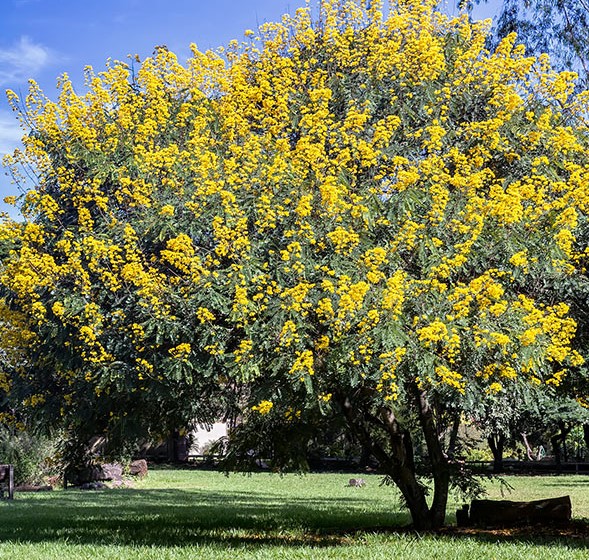
The Cassia tree is a flowering tree native to the southeastern United States & Florida. The flowers are two to three inches across, arranged in pairs along densely packed racemes. These trees grow up to two feet in height. The leaves are pinnate, with six to twelve pairs of long oval leaflets. Once flowering is finished, the flowers turn into seed pods.
The Cassia tree is a popular street planting throughout Florida. They make beautiful showpieces and can be grown in groups or rows. Planting them in a group or row will help them flower at a predictable time each year. Several varieties are available. Some of them can be grown in containers, while others need the sun to thrive.
The Cassia tree is a popular landscape plant in North Florida, where it adds a pop of color to the landscape. They have yellow flowers that hang in long clusters on their branches. These colorful trees are also excellent for containers. They can also be grown as lawn trees or specimen trees. Just remember to prune them regularly to keep them tidy.
Parkinsonia

The yellow-flowering tree, Parkinsonia florida, is a beautiful tree that is ideal for planting in a desert garden. Its small, pea-like flowers are yellow and bloom in the early Spring. This plant also has a distinctively beautiful bark, which is partially yellow at first, and then changes to blue and eventually gray when fully mature.
Parkinsonia florida is native to the Sonoran Desert, and its common name means “green stick” in Spanish. It can reach heights of ten to twelve meters, and is a fast-growing large shrub. However, it rarely lives more than 100 years. Its closely related species, Parkinsonia microphylla, is taller and matures more slowly.
Native to Sonora and Baja California, this tree can be found in central Arizona, southern California, and western Nevada. The genus has 13 accepted species names, according to the World Flora Online. The genus was first described by Carl Linneus in 1752.
Yellow elder Trees
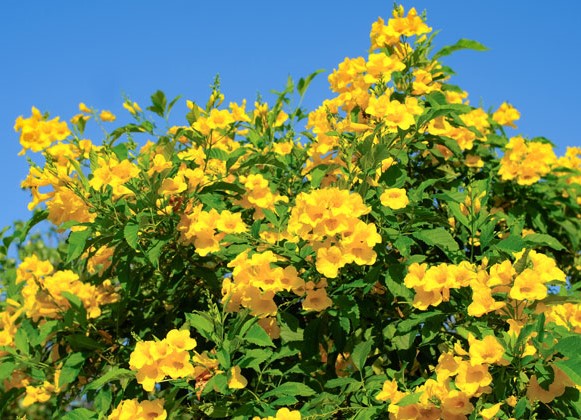
Native to the Bahamas and Cuba, the yellow elder (Tecoma stans) is a showy, multi-stemmed shrub or small tree that can reach 20 feet in height. It has glossy green leaves and clusters of tubular, yellow flowers that bloom from spring through fall. The yellow elder is tolerant of a wide range of soil and light conditions, making it a popular choice for landscaping in Florida.
The yellow elder tree is a common sight in Florida. These trees are known for their bright yellow flowers, which bloom in the spring and summer. The elder tree is also a popular choice for landscaping because it is drought-tolerant and can tolerate high winds.
Yellow Chain Tree
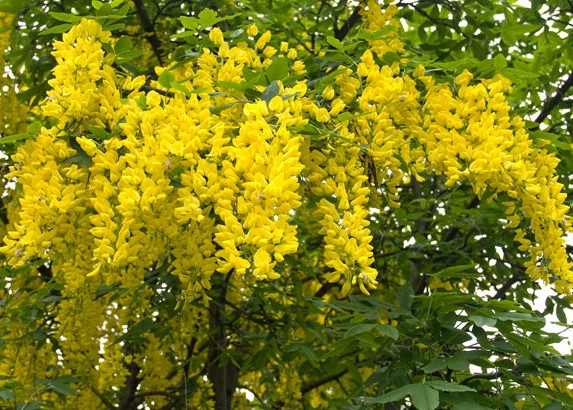
The yellow chain tree, or laburnum, is a popular choice for landscaping in Florida. The tree features yellow blossoms that occur in clusters of six to ten flowers. These blooms have a strong fragrance. The tree grows up to fifteen feet tall and spreads its branches to cover a large area. These trees also grow well alongside other trees in a landscape.
Yellow is the color of joy and happiness, so planting yellow trees in Florida is a good idea. They’ll add aesthetic value to your landscape and improve the privacy of your property. You can also plant them to provide shade and cover up unsightly bushes. Yellow trees are also good traffic stoppers and are ideal for urban landscaping.
The golden chain tree was first introduced to England during the 1500s, where it was grown by the medieval herbalist Gerard. Gerard, who grew Laburnum in his garden, called it a bean trefoil. Its Self-propagation quickly spread throughout the British Isles. The species contains two subspecies: the common labrum, which grows throughout temperate habitats, and the alpine laburnum, which grows quickly and reaches up to 15 feet.
Golden Shower Tree
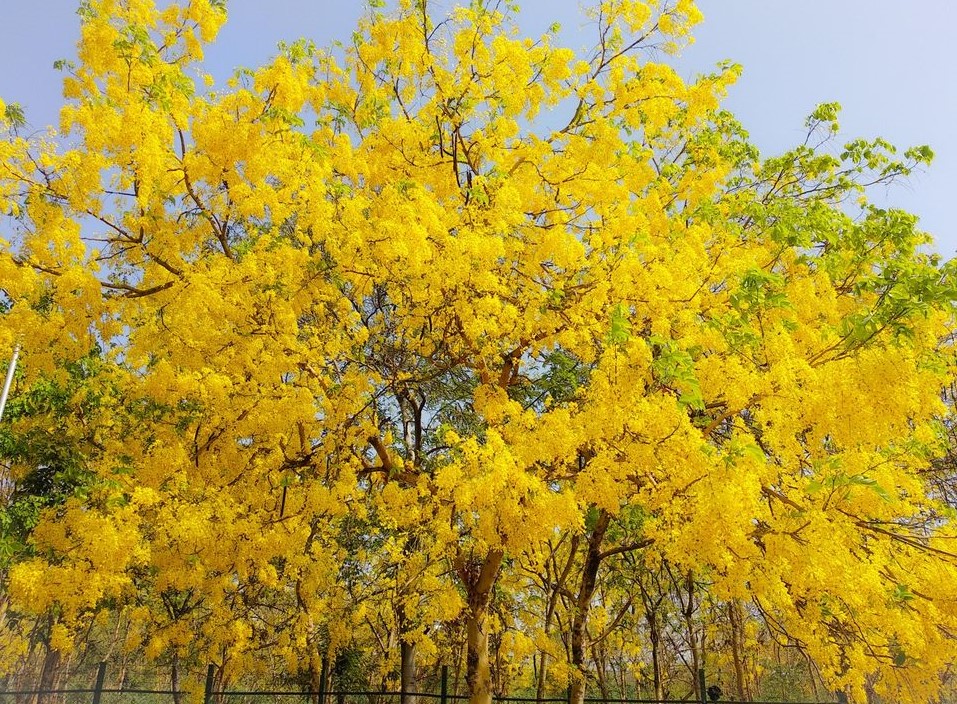
The Golden Shower Tree, or Cassia Fistula, is a beautiful plant native to the East Indies. During the month of June, it blooms with masses of yellow flowers. It is often planted with other plants to create an amazing blend of color. This is an especially beautiful plant if planted with Jacaranda trees.
This tree grows 30-40 feet tall and wide. The branches are covered in pinnately compound leaves that grow up to eight inches long and two inches wide. These leaves die back quickly, but the tree will sprout new ones to replace them. In the summer, the Golden Shower Tree bears showy yellow flowers, which mature into seedpods about two feet long. The seeds are poisonous and should not be eaten.
The Golden Shower Tree is a fast-growing medium-sized tree that can grow up to 60 feet (18 m) tall. Its branches are slightly drooping and the bark is gray, mottled, and moderately rough. Its leaves are dark green and alternate. They have four to eight pairs of opposite leaflets. Its flowers are 8 to 18 inches long and have five petals.
Yellow Trumpet
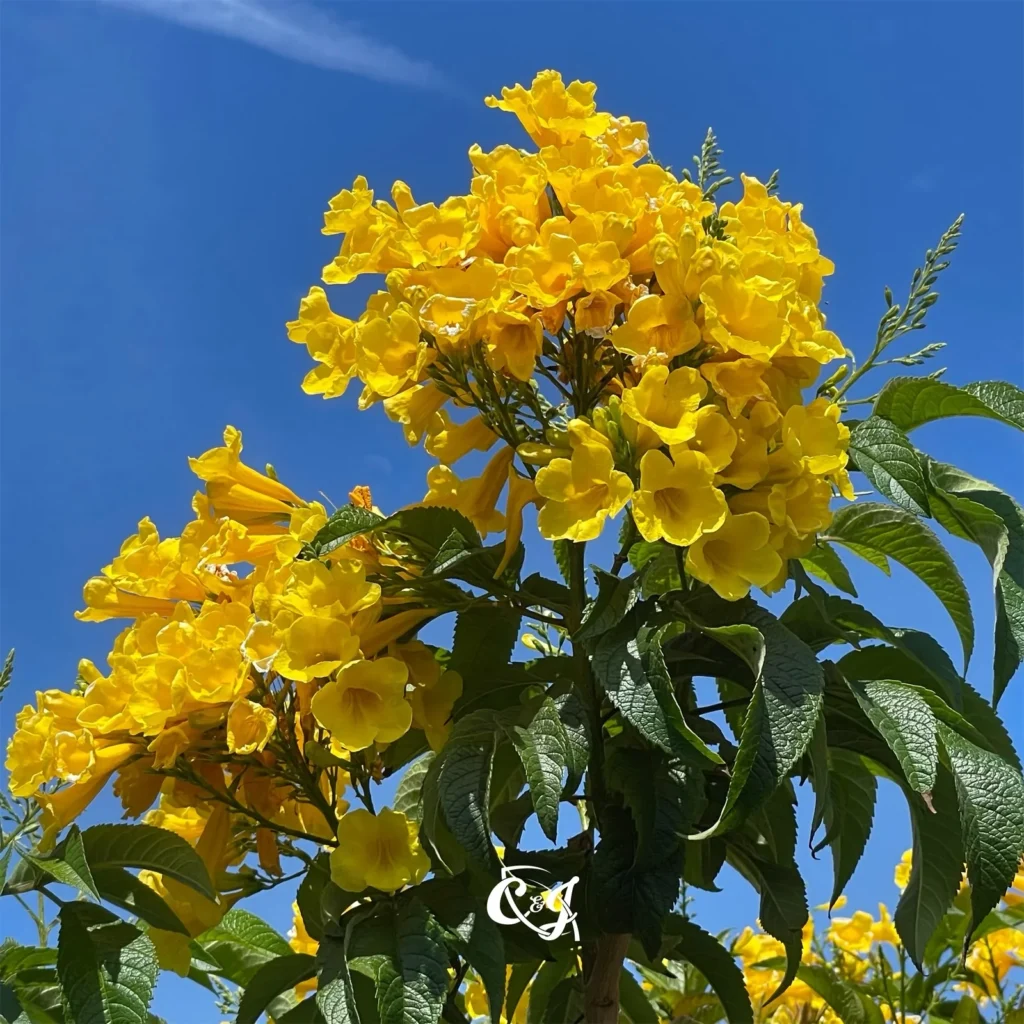
The Yellow Trumpet flowering tree is native to South America and is a striking tropical addition to the landscape. Its distinctive asymmetrical form and bright yellow blooms make it the perfect plant for sunny landscapes. In addition to its stunning flowers, the Yellow Trumpet also boasts an attractive silvery foliage that remains in place throughout the year. This tree is an excellent choice for gardens in sunny areas because it can grow as high as 25 feet and has a wide crown.
The flowering tree is native to South, Central, and the West Indies. It is part of the genus Handroanthus, a genus of more than 100 species. These flowering trees have small, tubular flowers containing several stamens.
The yellow trumpet flowering tree is a common sight in Central Florida. It’s so pretty that you’d barely notice it when it’s not in bloom. I saw one the other day on our way to breakfast. We took pictures of it as we continued our walk. The tree has lost many of its blossoms since then, but it’s still a beautiful sight to see.
Yellow Buckeye

If you’re looking to brighten up your landscape with a yellow flowering tree, there are several varieties to choose from. Tabebuya trees, which are native to Florida, bloom in the spring. According to Lee County Horticultural Officer Stephen H. Brown, the flowering time varies according to the location.
Other species, such as the Golden Dewdrop, feature pink or purple flowers. However, the yellow variety is a true standout. It is a semi-deciduous tree with a dense crown and a citrus-scented foliage. It grows well in full sunlight and prefers moist, fertile soil.
The golden trumpet is another yellow flowering tree that grows from 12 to 18 feet. This tree blooms in the spring and is a common sight in older neighborhoods. Its golden yellow flowers resemble a trumpet bell. There are many species of Tabebuia, some of which produce pink blooms as well.
Palo Verde
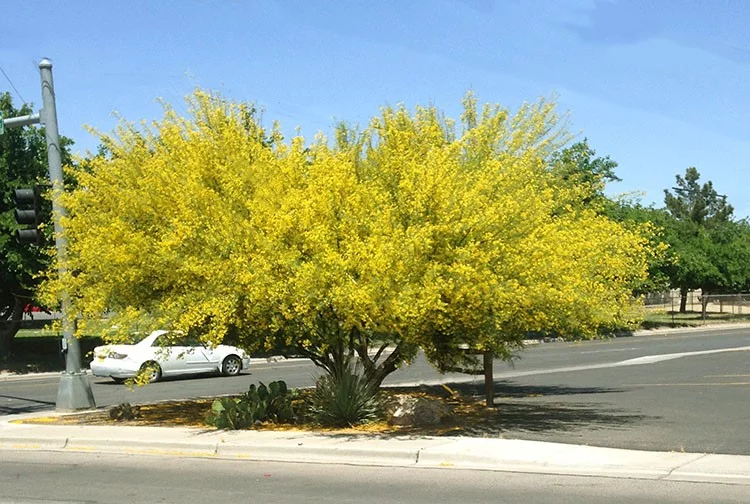
The pale yellow flowers of the Palo Verde yellow flowering tree are a favorite attraction for many people. They have five papery petals with orange speckles and distinctive orange or red stamens. This beautiful tree blooms in the late spring and fall. The yellow blossoms are followed by seed pods that have large, edible black or brown seeds. The seedpods are also useful for cleaning up sidewalks and streets.
Palo Verde trees are often found growing in areas that receive infrequent rainfall. Due to this, they have evolved in ways that help them survive in the region. In order to conserve water, they have adapted by adopting a deciduous habit. This habit allows them to save precious water, which is particularly important when the water supply is limited. They also benefit from monthly watering during the summer months.
The blue Palo Verde tree is one of the largest varieties and can grow to 35 feet in height. It has small, blue-green leaves and blooms in the springtime. It has weeping branches and is drought-resistant. In cold climates, the blue variety can reach up to 15 degrees F.
